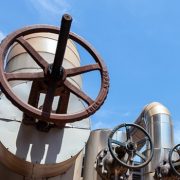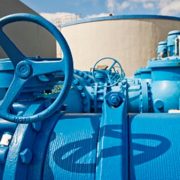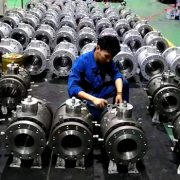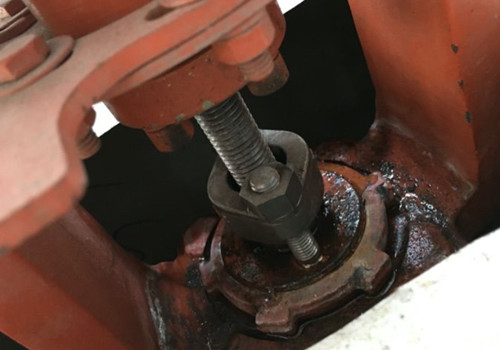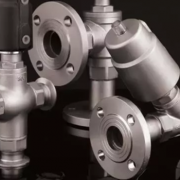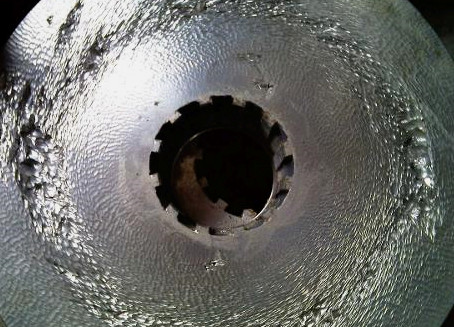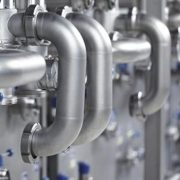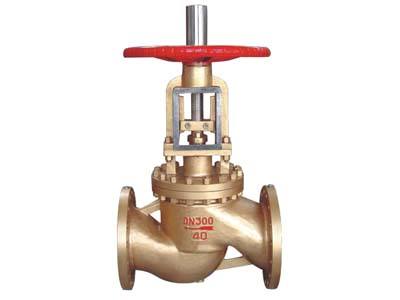The commonly used material for valve body
Meets the preceding text, the common material of valve body includes carbon steel, low-temperature carbon steel, alloy steel, Austenitic stainless steel, cast copper-alloy titanium alloy, aluminum alloy, etc., of which carbon steel is the most widely used body material. Today here we will collect the commonly used material for valve body.
| Valve body material | Standards | Temperature /℃ | Pressure /MPa | Medium |
| Gray cast iron | -15~200 | ≤1.6 | Water, gas,
|
|
| Black malleable iron | -15~300 | ≤2.5 | Water, seawater, gas, ammonia
|
|
| Ductile iron | -30~350 | ≤4.0 | Water, seawater, gas, air, steam
|
|
| Carbon steel (WCA、WCB、WCC) | ASTM A216 | -29~425 | ≤32.0 | Non-corrosive applications, including water, oil and gas |
| Low-temp carbon steel (LCB、LCC) | ASTM A352 | -46~345 | ≤32.0 | Low temp application |
| Alloy steel (WC6、WC9)
(C5、C12) |
ASTM A217 | -29~595
-29~650 |
High-pressure | Non-corrosive medium /
Corrosive medium |
| Austenitic stainless steel | ASTM A351 | -196~600 | Corrosive medium | |
| Monel alloy | ASTM A494 | 400 | Medium containing hydrofluoric acid | |
| Hastelloy | ASTM A494 | 649 | Strong corrosive media such as dilute sulfuric acid | |
| Titanium alloy | A variety of highly corrosive media | |||
| Cast copper alloy | -273~200 | Oxygen, seawater | ||
| Plastics and ceramics | ~60 | ≤1.6 | Corrosive medium |
| Codes | Material | Standards | Applications | Temperature |
| WCB | Carbon steel | ASTM A216 | Non-corrosive applications, including water, oil and gas | -29℃~+425℃ |
| LCB | Low-temp steel | ASTM A352 | Low temp application | -46℃~+345℃ |
| LC3 | 3.5%Ni- steel | ASTM A352 | Low temp application | -101℃~+340℃ |
| WC6 | 1.25%Cr0.5%Mo steel | ASTM A217 | Non-corrosive applications, including water, oil and gas | -30℃~+593℃ |
| WC9 | 2.25Cr | |||
| C5 | 5%Cr 0.5%Mo | ASTM A217 | Mild or noncorrosive applications | -30℃~+649℃ |
| C12 | 9%Cr 1%Mo | |||
| CA15(4) | 12%Cr steel | ASTM A217 | Corrosive applications | +704℃ |
| CA6NM(4) | 12%Cr steel | ASTM A487 | Corrosive applications | -30℃~+482℃ |
| CF8M | 316SS | ASTM A351 | Corrosive, ultra-low or high temp non-corrosive applications | -268℃ to+649℃,425℃ above or specified carbon content is 0.04% or above |
| CF8C | 347SS | ASTM A351 | High temp,corrosive applications | -268℃to+649℃,540℃ above or specified carbon content is 0.04% or above |
| CF8 | 304SS | ASTM A351 | Corrosive, ultra-low or high temp non-corrosive applications | -268℃to+649℃,425℃ above or specified carbon content is 0.04% or above |
| CF3 | 304LSS | ASTM A351 | Corrosive or non-corrosive applications | +425℃ |
| CF3M | 316LSS | ASTM A351 | Corrosive or non-corrosive applications | +454℃ |
| CN7M | Alloy stel | ASTM A351 | Good corrosion resistance to heat sulfuric acid | +425℃ |
| M35-1 | Monel | ASTM A494 | Weldable grade, good resistance to organic acid and saltwater corrosion.
Most alkaline solution corrosion resistance |
+400℃ |
| N7M | Hastelloy B | ASTM A494 | Suitable for various concentrations and temperatures of hydrofluoric acid, good resistance to sulfuric acid and phosphoric acid corrosion performance | +649℃ |
| CW6M | Hastelloy C | ASTM A494 | At high temperature, it has high corrosion resistance to formic acid, phosphoric acid, sulfurous acid and sulfuric acid | +649℃ |
| CY40 | Inconel | ASTM A494 | Works well in high temp applications, has good corrosion resistance to highly corrosive fluid media |
As a fully stocked manufacturer and distributor of the industrial valve, PERFECT provides a complete line of valves for sale that is supplied to various industries. Available valve body material including carbon steel, stainless steel, titanium alloy, copper alloys, etc and we make the material easy to find for your valve need.

